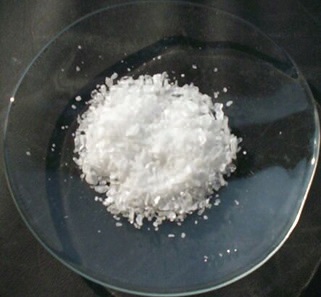REACH and borates
R. David Whitby | TLT Worldwide July 2010
Germany and Denmark are considering a ban on borate-based products because of their effects on mammalian reproduction.

Boric acid and tetraborates are widely used in lubricants, particularly metalworking fluids, as corrosion inhibitors, antibacterial agents and buffering agents.
In January 2007 I wrote about the REACH directive—the Registration, Evaluation and Authorization of Chemicals—in the European Union. The REACH directive aims to increase the safe use of chemicals in all industries in Europe by very precisely managing their effects on health, safety and the environment.
All manufacturers of chemicals within Europe, as well as all importers of chemicals into Europe, are now subject to the regulations, which came into effect in spring 2007. Lubricants are covered in all forms, including base oils, synthetic fluids and additives, bulk and packaged finished oils and greases and prelubricated equipment.
Last March Germany and Denmark proposed adding boric acid and disodium tetraborate (both anhydrous and hydrated) to the list of Substances of Very High Concern (SHVC) due to their effects on mammalian reproduction. In the framework of the authorization process, Member States Competent Authorities or the European Chemicals Agency (ECHA), upon request of the European Commission, may prepare Annex XV dossiers for the identification of SHVC. These are defined in Article 57 of Regulation EC 1907/2006 (the REACH Regulation) and include substances which are:
•
Carcinogenic, Mutagenic or Toxic to Reproduction (CMR), meeting the criteria for classification in Category 1 or 2 in accordance with Directive 67/548/EEC.
•
Persistent, Bioaccumulative and Toxic (PBT) or very Persistent and very Bioaccumulative (vPvB), according to the criteria in Annex XIII of the REACH Regulation.
•
Identified, on a case-by-case basis, from scientific evidence as causing probable serious effects to human health or the environment of an equivalent level of concern as those above (For example, endocrine disrupters).
According to the dossiers currently being considered by the ECHA, results from animal experiments demonstrate that boric acid adversely affects fertility and development. Feeding studies in different animal species (rats, mice and dogs) have consistently demonstrated that the male reproductive system is the principle target in experimental animals, although effects on the female reproductive system have also been reported. Investigations of potentially reproductive effects in humans have not been specifically focused on boric acid alone: available epidemiological studies mainly addressed the effects of exposure to inorganic borates in general.
Available data on toxicokinetics do not indicate major differences between laboratory animals and humans. It is not known whether there are significant differences in the toxicodynamics between humans and laboratory animal models; in the absence of such knowledge it is being assumed that the effects seen in animals could occur in humans. On the basis of toxicokinetic and toxicodynamic considerations, it is assumed that the animal data are relevant to humans. This is further underlined by indications that boric acid is able to cross human placenta and that, up to now, epidemiological studies in humans are insufficient to demonstrate the absence of an adverse effect of inorganic borates on fertility.
In addition to numerous uses in many products, boric acid and tetraborates are widely used in lubricants, particularly metalworking fluids, as corrosion inhibitors, antibacterial agents and buffering agents. As borates often are used as a multifunctional additive in MWFs, this increases the demands for available alternative chemicals or alternative techniques. In general, for uses in industrial fluids, no direct alternatives exist with the same high level of performance in addition to fulfilling the demands on cost effectiveness.
According to many downstream users of borate-based lubricants, the products cannot be replaced with the same level of performance and cost efficiency based on their experiences from working on finding a suitable replacement for these chemicals. For buffering action, other buffering systems covering the same pH range are available. However, having multifunctional functions, borates may be difficult to replace to obtain the same level of performance.
Now that boric acid and borates are under investigation, formulators and marketers of MWFs are likely needed to evaluate the exposure risks posed to engineering-workshop operators and decide whether these substances can continue to be used or if effective substitutes can be found.

David Whitby is chief executive of Pathmaster Marketing Ltd. in Surrey, England. You can reach him at
pathmaster@dial.pipex.com.